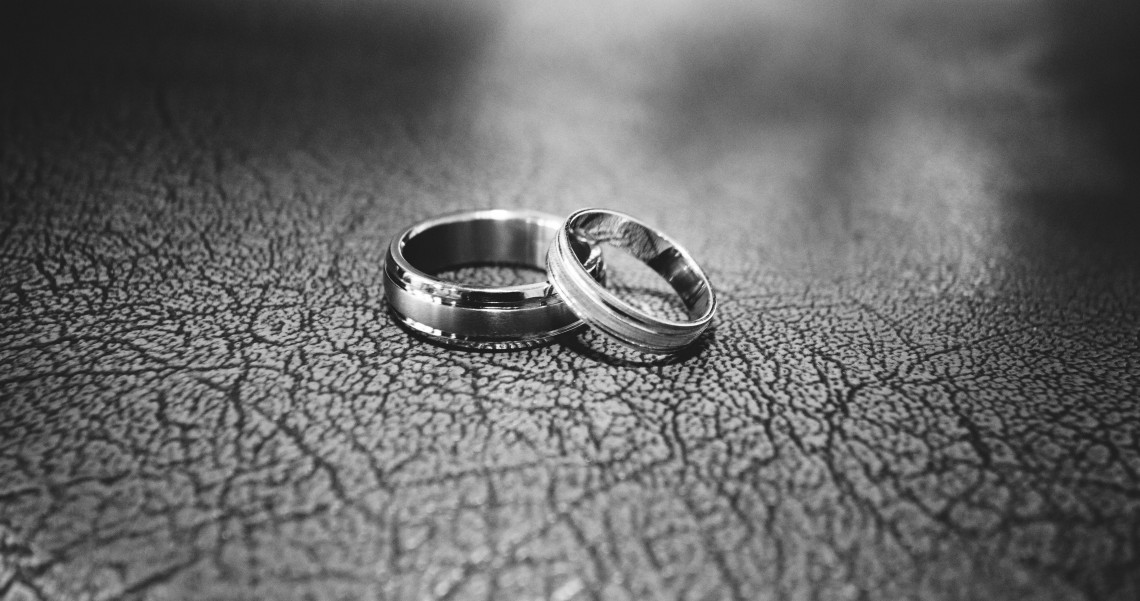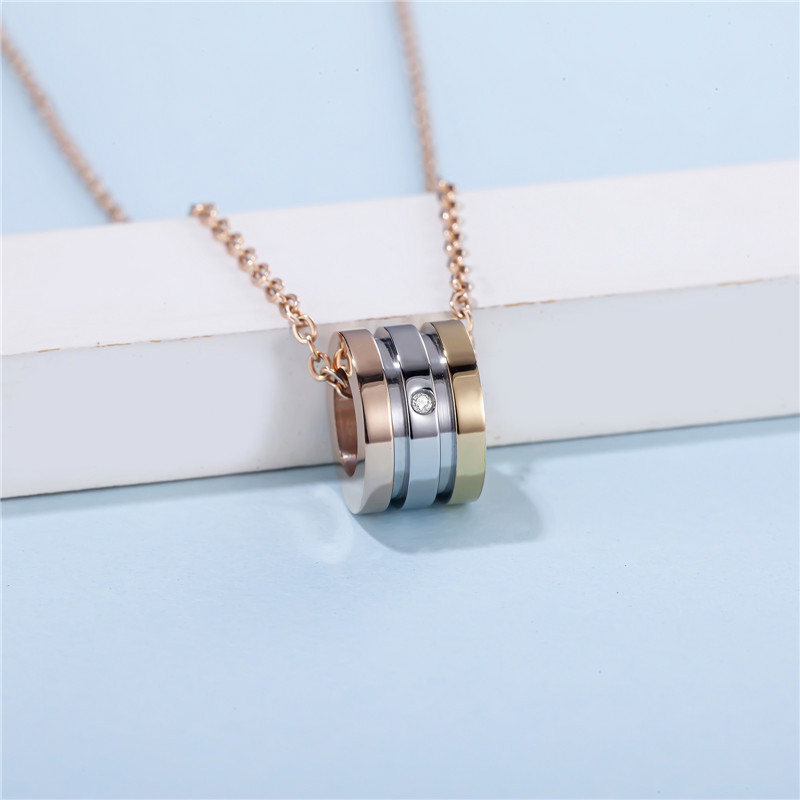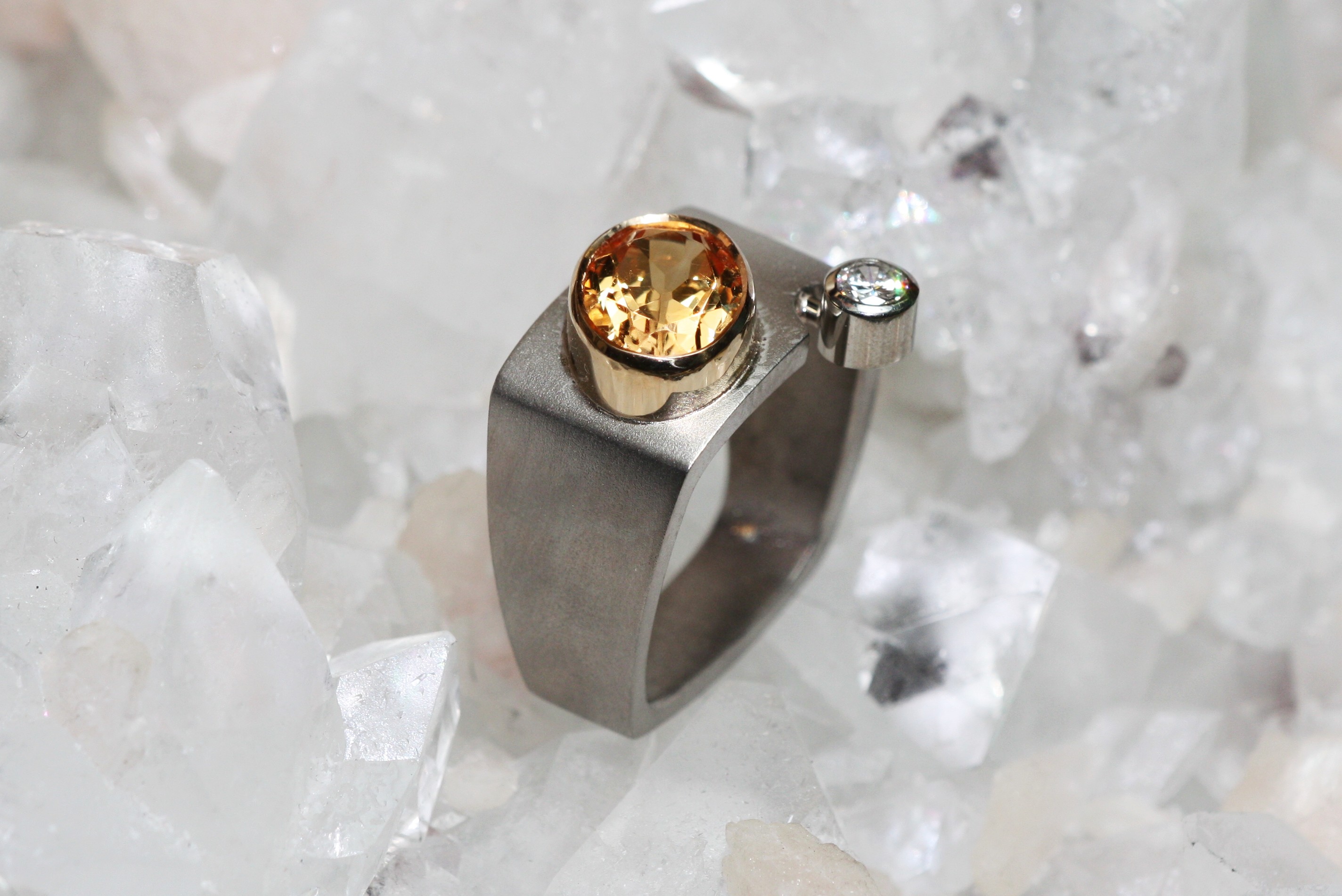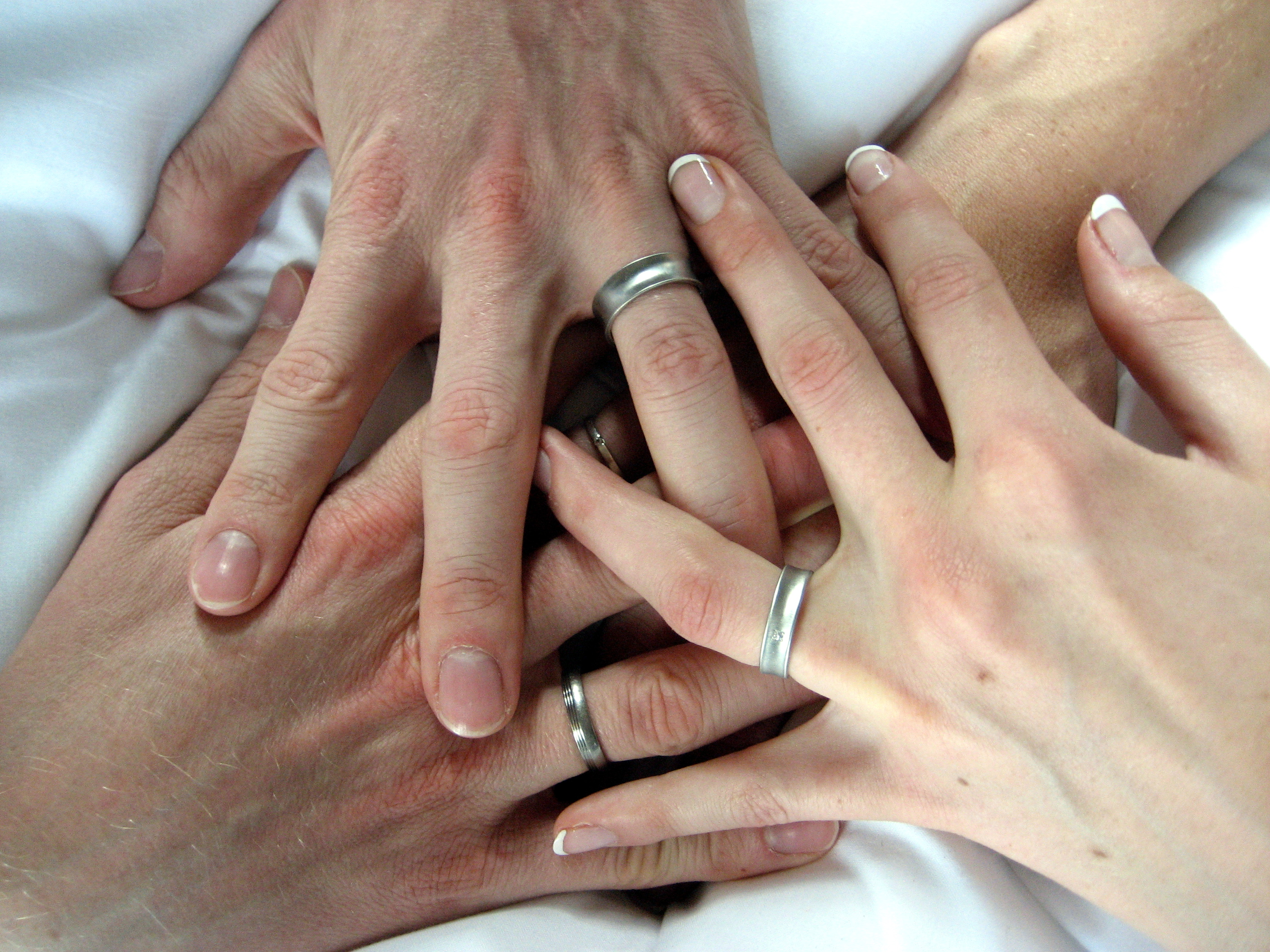
Platinum vs Titanium Jewelry: Understanding the Pros & Cons
 Platinum and titanium are two fashionable and durable metals outside the well-known gold and silver that have become more and more popular for jewelry, particularly wedding bands.
Platinum and titanium are two fashionable and durable metals outside the well-known gold and silver that have become more and more popular for jewelry, particularly wedding bands.
Are titanium rings better than platinum? Well, it’s largely a matter of preference, as the two are similar in appearance but entirely distinct metals.
One major difference between platinum and titanium is each metal’s status. Platinum is one of the four precious metals (along with gold, silver, and palladium), meaning it’s rare and valuable. As a non-precious metal, titanium classifies as an alternative metal.
However, precious metals aren’t inherently better. There are many factors to consider when choosing metal for your jewelry.
So, which is better: titanium or platinum? That’s what we’ll be answering today as we break down the pros and cons of titanium vs platinum based on factors like strength, price, durability, and more.
But first, let’s establish some basics about these two metals.

What Are Platinum and Titanium?
Platinum is an element and metal with a silvery-white color. It’s known for being very tarnish- and corrosion-resistant, along with having flexibility that makes it easy to form into various shapes for jewelry. The metal is often compared to white gold for its similar bright white appearance.
Titanium is an element and metal only found naturally as an oxide. It’s known for being lightweight, being corrosion-resistant, and having the highest strength-to-weight ratio of any pure metal — it’s as strong as steel but only slightly heavier than aluminum.
Purity & Grades
The platinum and titanium used in jewelry are pretty much never pure. Jewelers will mix other metals in, creating an alloy — this is the case for most jewelry metals, precious or not.
Titanium is often combined with aluminum and vanadium. Platinum is usually combined with iridium, cobalt, copper, palladium, or ruthenium. Most platinum rings are 90 percent platinum and 10 percent iridium or 95 percent platinum and 5 percent ruthenium.
You can even find titanium-platinum alloys, but this mixture is less common for jewelry.
In terms of platinum grades — a classification that typically indicates a metal’s composition, purity, and durability — most platinum jewelry is Grade 950, meaning the metal is composed of 95 percent platinum and 5 percent other metals.
The grades for titanium are a bit more complex.
Titanium Grades
There are two overarching categories for titanium grades: titanium alloy grades and commercially pure (CP) grades. Commercially pure grades are classified as 1 through 4, while titanium alloy grades go from 5 to 23.
Most reputable jewelers use commercially pure grades of titanium for jewelry. These grades are:
Grade 1: Softest, most flexible, and easiest to shape; Has the least impurities or added metals; Highest impact toughness (which we’ll elaborate on later) and corrosion-resistance
Grade 2: Harder than Grade 1, near equally resistant to corrosion, easy to shape; Widely available, easy to use; Good impact strength & flexibility
Grade 3: Least commonly used but still valuable; Stronger than Grade 1 or Grade 2, similarly flexible, less easy to shape
Grade 4: Hardest and strongest but least flexible; High corrosion-resistance; Can have the most oxygen and/or iron content of any grade
All that said, a lot of titanium jewelry is actually Grade 5, also called Ti 6Al-4V titanium. This grade is roughly 90 percent titanium, 6 percent aluminum, 4 percent vanadium, 0.25 percent iron, and 0.2 percent oxygen. Grade 5 titanium is quite strong, but more expensive and harder to work with.
Another titanium grade often used for body piercings is called “Aircraft Grade” titanium, which mixes in aluminum and vanadium, sometimes with tin as well. This type has a whiter color and three times the strength of any of the Commercially Pure grades listed above.
With the basics covered, we’ll start our comparison by going over the buying factors of platinum jewelry.

Pros and Cons of Platinum Jewelry
Platinum is a great jewelry metal with many advantages, such as:
Tends to be a higher purity than other metal jewelry — (For example, the popular 18K gold is only 75 percent gold, compared to most platinum jewelry that’s 90 to 95 percent platinum.)
Mostly white color complements virtually any gemstone or embellishment
Extremely resistant to tarnishing, corrosion, and discoloration
Easily maintained
On the other hand, some disadvantages of platinum jewelry to consider include:
Denser (and thus more expensive by weight) than other metals, making it a heavy ring or jewelry item
Can be scratched fairly easily
Rare and more expensive than other metals
Difficult and expensive to resize
Additionally, platinum is tricky to work with, so platinum jewelry can come with higher labor costs from the start and down the road if you need it repaired.
Now, is titanium jewelry good? We’ll answer that next!

Pros and Cons of Titanium Jewelry
Titanium is a good jewelry metal, with advantages like:
Higher scratch-resistance than precious metals
More affordable than precious metals
Won’t crack or shatter from hard impact
Lightweight (can be a matter of preference)
Very corrosion-resistant and rust-resistant
Won’t fade in color over time
Hypoallergenic
Versatile colors and finishes available
But some of the disadvantages of titanium jewelry include being:
Difficult to resize
Difficult to add on traditional prong settings (unless prongs are a different metal)
Not as valuable for resale
Not as shiny as other metals
With all those pros and cons in mind, it’s time to see how platinum and titanium compare to each other.
 Pictured above: Platinum ring with diamonds | Image credit: VIP jewelry Ltd., Calgary by Dmitri Vtornikov; Creative Commons Attribution-Share Alike 3.0 Unported license
Pictured above: Platinum ring with diamonds | Image credit: VIP jewelry Ltd., Calgary by Dmitri Vtornikov; Creative Commons Attribution-Share Alike 3.0 Unported license
Platinum vs Titanium Comparison
As we mentioned up top, many factors go into what makes a jewelry metal “better” than another. Before you choose between a platinum vs titanium wedding band (or other type of jewelry), it’s important to know how each metal compares based on each factor.
Platinum vs Titanium Appearance
Starting with platinum vs titanium color, platinum is silvery-white while titanium is a slightly darker gray. Those are their colors in the metals’ natural forms. Titanium also has a somewhat visible texture.
One benefit of titanium is that jewelers can anodize it to be various colors such as black, blue, green, purple, and even rose gold.
Platinum, on the other hand, cannot be anodized, so its colors are more limited. That said, anodized metals are prone to scratches and color fading.
Speaking of fading, platinum’s color won’t fade, but its luster will dull over time.
In terms of shine, platinum will almost always look brighter than titanium unless you opt for a matte finish.
Platinum vs Titanium Weight
Besides the aesthetic, another matter of preference for jewelry like rings is how it feels — namely, how heavy it is.
Some people like a heavier wedding ring, for instance, as a reminder of their commitment. But others may have sensory sensitivity or simply prefer not feeling their ring on their finger. It’s all a matter of preference!
Titanium is known for being incredibly lightweight, especially for how strong it is. Meanwhile, platinum is incredibly dense — roughly 40 percent denser than gold — so platinum jewelry feels quite heavy. Comparing the two metal’s densities, titanium is around one-third of the weight of platinum.
To put that in perspective, a 2-inch cube of platinum would weigh just over 1.5 pounds while a 2-inch cube of titanium would weigh 0.16 pounds.
Now, which metal is stronger: platinum or titanium?
 Pictured above: Titanium wedding bands
Pictured above: Titanium wedding bands
Platinum vs Titanium Strength
A metal’s strength comes from a few factors:
Hardness (scratch-resistance)
Tensile strength (how much it’ll stretch before breaking)
Impact strength (resistance to breaking from a hard blow; low impact strength makes a material “brittle”)
Starting with hardness, platinum ranks at 4 to 4.5 on the Mohs hardness scale, while titanium ranks at 6. That means titanium is harder than platinum, so a platinum ring will get scratched more easily than a titanium ring. However, it’s easier to remove scratches from platinum than titanium.
Keep in mind: the alloys added to platinum or titanium can increase either metal’s hardness.
Looking at tensile strength, titanium often beats out platinum, but it can depend on the grade. Grade 1 titanium has a tensile strength of 240 to 241 MPa (megapascals) compared to platinum’s tensile strength of 120 MPa.
Titanium and platinum have comparable impact strength, both bending under pressure instead of cracking or shattering.
To sum that up, titanium is generally stronger than platinum.
But is titanium more expensive than platinum?
Platinum vs Titanium Price
Platinum is much harder to come by and thus more expensive than titanium. In fact, platinum is among the most expensive wedding ring metals.
If you look at titanium vs platinum vs gold prices, titanium is considerably lower while platinum is around the same price per gram as gold. However, platinum is denser, meaning it takes more platinum to make a ring; therefore, it will cost more than a gold ring of the same size.
It’s difficult to give exact prices, since every retailer and jeweler is different. Plus, additional costs are added on for gemstones, embellishments, inlays, and engravings.
Additionally, the value of platinum fluctuates with the market, like gold value.
If we’re talking about the melt price of Grade 950 platinum — the value of the metal alone without labor and retail add-ons — it’s currently around $32 per gram or $1,063 per Troy ounce. In contrast, the melt price of pure titanium is $0.35 per pound or $0.0008 per gram.
No matter what you’re spending, you’ll want your jewelry to last. So how long can you expect platinum and titanium jewelry to last before needing maintenance?
How Long Does Platinum and Titanium Jewelry Last?
Both platinum and titanium are highly resistant to corrosion, tarnishing, and rusting.
How long does titanium jewelry last? In most cases, a lifetime! Reputable jewelers will offer a lifetime warranty as well. However, lower-grade titanium may not last as long, so it’s important to choose high-quality titanium jewelry from the get-go.
How long does platinum jewelry last? Also a lifetime! Although, it will start to take on patina and develop small scratches. Luckily, scratches on platinum will only warp the metal, not chip away at it (thanks to platinum’s malleability). Plus, many buyers appreciate the look of aged platinum.
 Pictured above: Titanium wedding band (left) and white gold wedding band (right) | Image credit: Abulic Monkey from Birmingham, UK; Creative Commons Attribution 2.0 Generic license
Pictured above: Titanium wedding band (left) and white gold wedding band (right) | Image credit: Abulic Monkey from Birmingham, UK; Creative Commons Attribution 2.0 Generic license
Is Platinum or Titanium Jewelry Right For You?
Platinum and titanium have a lot in common: they’re both strong, hypoallergenic, similar in appearance, and well-suited to complement virtually any gemstone. If you’re looking for strength on a budget, titanium is the jewelry metal for you. If you’re looking for a bright, whiter shine with higher value, platinum is the one for you.
Regardless of which one you choose, both will resist tarnishing and look stunning!
Ready to shop? Browse our collection of high-quality jewelry!
Search the Fashion Encyclopedia
Related Auctions
Related Articles
How to Buy Jewelry on the Internet. There are so many types of beads. It will be up to you to determine where you want to start, all authentic gemstone beads or if you will also use glass beads ‘man made’ as well as gold and silver beading. You
10th Apr 2019
Jewelry gemstones are always tops in online demand
3rd Jan 2021
A simple guide for understanding gold hallmarks, how to identify them and the methods for testing gold purity.
13th Jun 2019
Latest Articles
Titanium is a popular jewelry metal known for being lightweight, durable, and affordable. Learn all about titanium, how it compares to similar metals, and the pros and cons of titanium jewelry.
7th Feb 2023
Learn all about tungsten jewelry - from its history and uses to its durability and care. By the end of our guide, you’ll know if tungsten is right for you!
7th Feb 2023
Thinking about adding some timeless white gold jewelry to your fine accessories collection? Here’s all there is to know about sophisticated white gold!
29th Jan 2023




